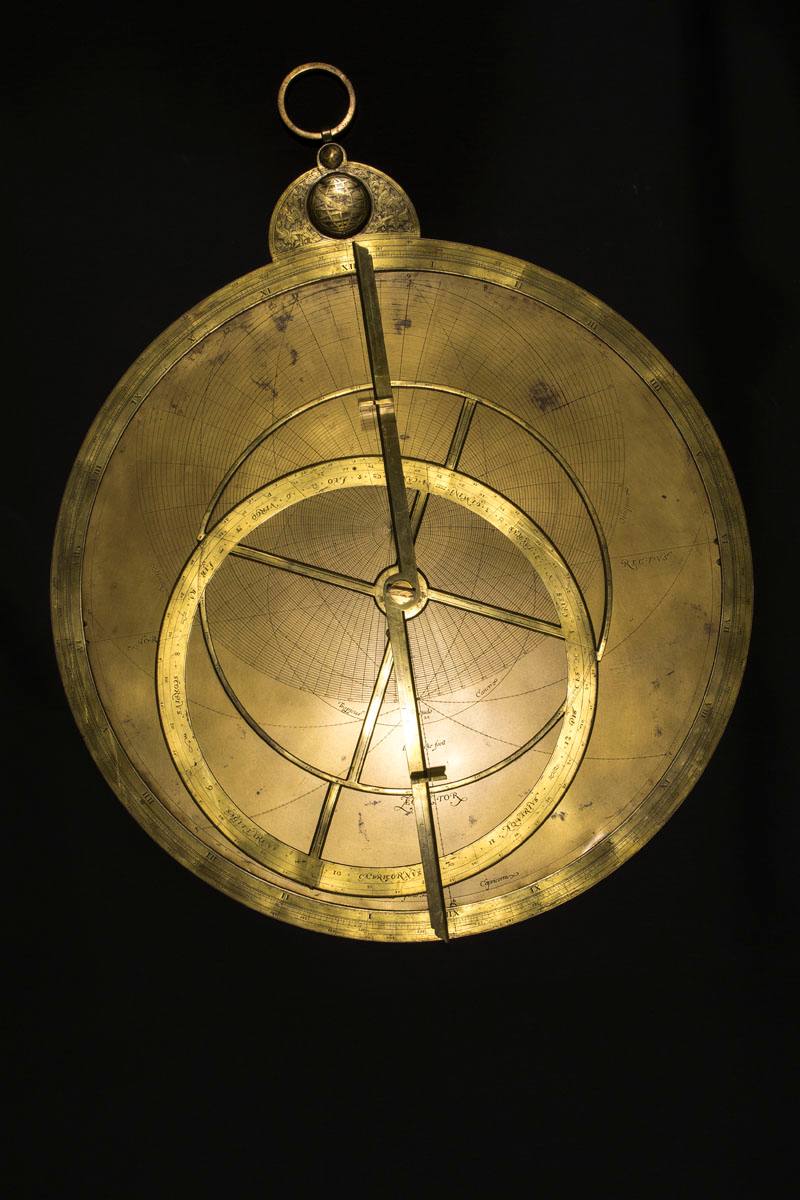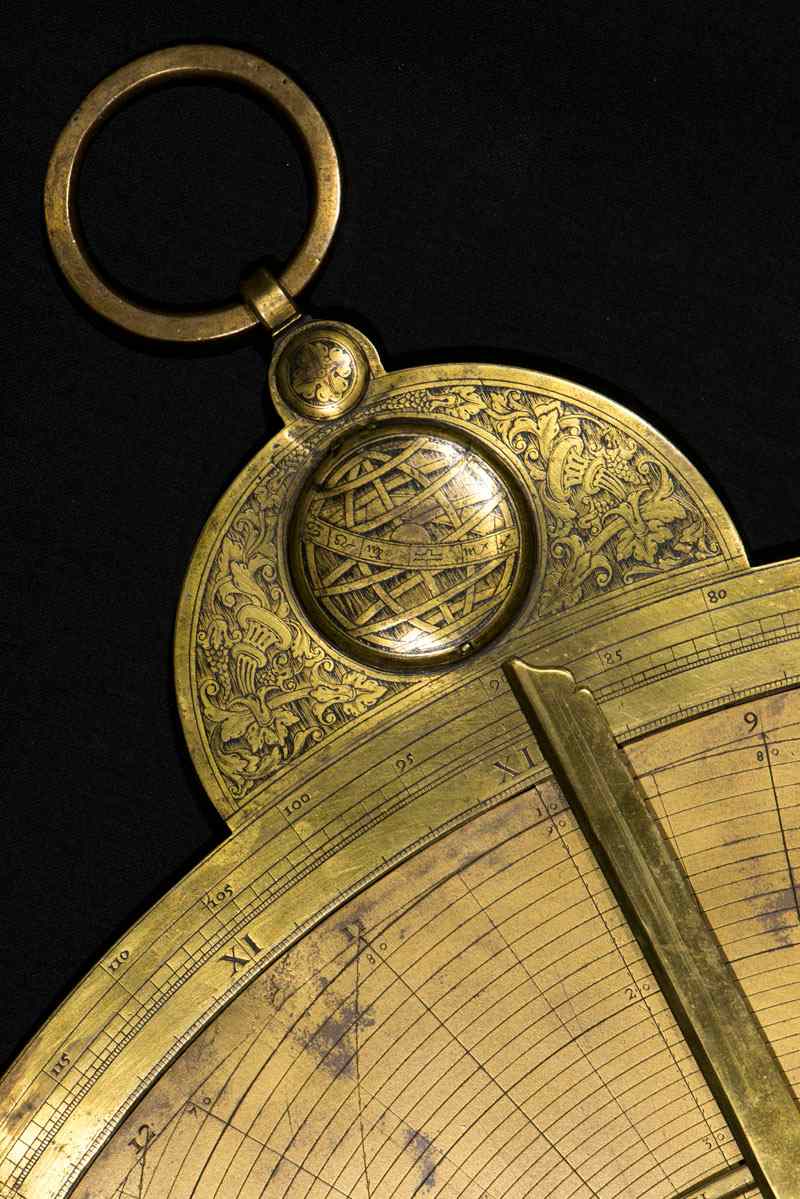This blog was written by one of our former volunteers, Sally Pentecost, on June 14, 2018. Sally is the creator of the medieval Scottish history blog, Her Medieval Scotland, and is passionate about sharing stories of the Middle Ages through social media and blog posts. She wrote her dissertation on the nature of earldoms in twelfth-century Scotland and graduated with an MLitt degree in Mediaeval History in December 2018.
The Great Astrolabe is one of the most exquisite items in museum collections at the University of St Andrews. Created by master craftsman Humphrey Cole in 1575, and widely considered to be his greatest work, the large brass piece is the most imposing of the many scientific instruments that Cole made by hand in his London workshop. A typical astrolabe was about 6 inches (15 cm) in diameter and could be attached to one’s clothing for personal use, but the size of the Great Astrolabe (61 cm diameter) would have made it cumbersome to use, and as such was likely designed as a presentation piece for a rich patron.

In addition to their impressive craftsmanship, astrolabes are some of the most versatile instruments ever made: they can be used to tell time during the day or night, determine latitude and cast horoscopes. The origins of the astrolabe can be found more than two thousand years ago and were highly developed in the Islamic world by 800 A.D. Islamic instruments were often equipped for finding the direction to Mecca and for determining prayer times. They were brought to Europe from al-Andalus in the early 12th century, and were the most popular astronomical instruments until about 1650, when they were replaced by more accurate devices.
Astrolabes were one of the basic astronomy education tools in the late Middle Ages and were not typically made for navigation, although the mariner’s astrolabe was widely used in the Renaissance. By adjusting the components to a specific date and time, much of the sky became visible on the face of the astrolabe, making it possible to chart the movement of celestial bodies. The base of the Great Astrolabe is deep enough to hold three plates, but only one of Cole’s plates survives, with a latitude of 52 degrees corresponding to the English Midlands. Another plate was designed for the astrolabe by John Marke of London, probably about 1673 at the request of James Gregory. One of the most prominent scientists of his day and a correspondent of Sir Isaac Newton, Gregory was Professor of Mathematics at St Andrews from 1668-1674. The Great Astrolabe is one of several items in the university collection believed to have been collected by Gregory, who was instructed to ‘goe for London’ and purchase ‘such instruments and utensils as he with the advice of other skilful persons shall judge most necessary and useful’ to equip the planned University observatory. The Marke plate has a latitude of 56°25′, close to the accepted latitude of St Andrews in that period.

Before the birth of Sir Isaac Newton and The Royal Society in the following century, the Elizabethan era witnessed significant scientific progress, of which Humphrey Cole was an important part. A mathematical instrument maker, die-sinker (an engraver of dies for stamping coins), and goldsmith, the first record of Cole (d.1591) is found in 1563, when he is recorded as working at the Tower mint in London. After 1578 he continued to sell ‘Geometricall instruments in metall’ influenced by Flemish designs, at his house near St Paul’s, London. Twenty-six remarkable mathematical instruments by Cole are still in existence, some commissioned by Edward VI and Elizabeth I, and all but one remain in public collections in the British Isles and on the continent.
Very little else is known about Humphrey Cole: reportedly hailing from the north of England, his legacy endures in the beautiful, intricate objects he left behind. The museum is fortunate to have acquired Cole’s masterpiece, an object so integral in the history of scientific research in the British Isles. Customised with the Marke plate displaying the latitude of St Andrews, the Great Astrolabe emphasises the university’s links to past scientific discoveries and its commitment to advancing our knowledge of the world around us. Another astrolabe made by Cole, which can be found in the British Museum, hints at Cole’s similar commitment to his own cause, with the inscription:
AS TIME AND HOVRES PASITH AWAYE
SO DOETH THE LIFE OF MAN DECAY
AS TIME CAN BE REDEMED WITH NO COST
BESTOW IT WELL AND LET NO HOWR BE LOSt
Why not find out more and even try making one of your own astrolabe by following instructions at In-The-Sky.org.